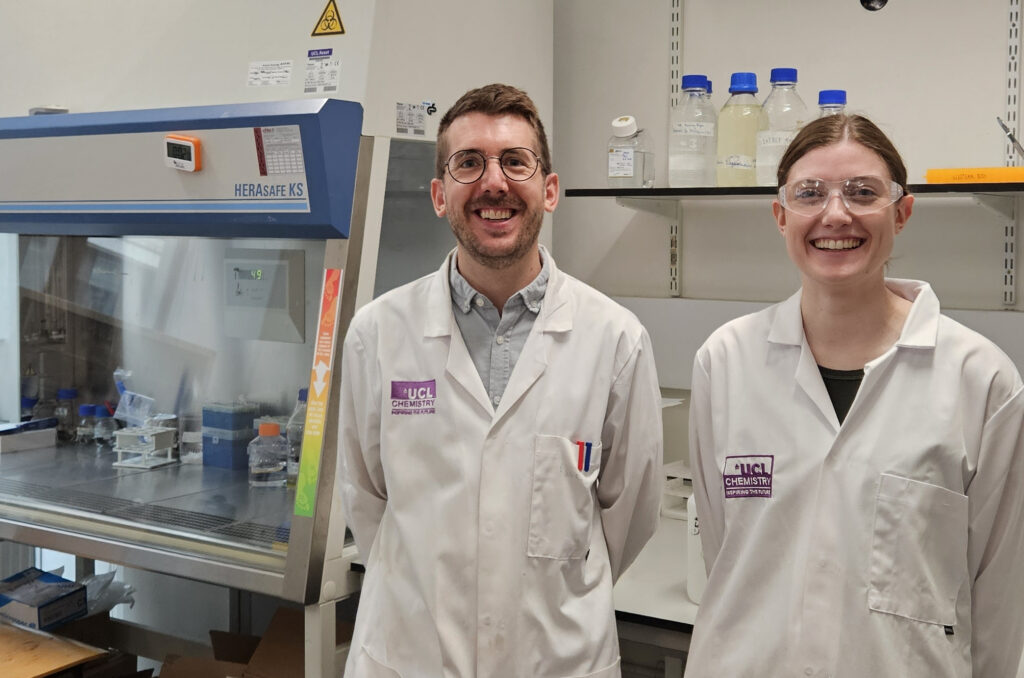Researchers at the University of Portsmouth are reshaping the future of sustainable construction by pioneering the use of agricultural waste fibres in earth-based building materials. In our earlier news report, we highlighted how Dr. Muhammad Ali’s work challenges long-standing assumptions about the limitations of raw earth materials and opens new possibilities for low-carbon, circular-economy construction.
Now, we sit down with Dr. Muhammad Ali (Associate Professor in Materials and Environmental Innovation; leading expert in Sustainable Materials Management) to explore the deeper scientific motivations behind this research, the engineering challenges of fibre-reinforced earth composites, and the path toward real-world, scalable, climate-resilient building technologies.
Dr Ali is an Associate Professor in Materials and Environmental Innovation at the University of Portsmouth. He is one of the UK’s leading experts in Sustainable Materials Management. He has dedicated his career to developing groundbreaking solutions for the construction industry. His research on transforming industrial waste into novel, sustainable construction materials is a testament to his innovation and unwavering dedication to promoting a circular economy. Dr Ali’s research has garnered global recognition and impact, culminating in successful patents and highly regarded research publications.
The following interview is presented unedited to preserve Dr. Ali’s original insights and provide an unfiltered view into how his team optimised fibre parameters, investigated microstructural mechanisms using SEM, and developed Natural Fibre Reinforced Compressed Earth Composite (FRCEC) technology.
What inspired you to explore incorporating agricultural waste plant fibres into raw earth mortar to replace or reduce cement in construction?
This research explores the incorporation of jute and agricultural waste fibres into construction materials, driven by a multi-tiered sustainability goal. Our primary aim is to reduce reliance on Portland cement, which is a significant contributor to global CO2 emissions. Simultaneously, we seek to valorise agricultural waste and promote a circular economy by utilising cheap and widely available natural plant-based fibres. Furthermore, natural Fibre Reinforced Compressed Earth Composite (FRCEC) technology directly addresses the inherent weaknesses of raw earthen/soil-based materials specifically low mechanical properties, soil shrinkage and cracking by introducing natural fibre reinforcement, an area critically under-researched in existing literature.
Your study found that adding 20 mm jute fibres at just 0.25% by weight improved compressive strength by ~12% and flexural strength by ~20%. Why did you choose that fibre length and dosage, and how sensitive are results to those parameters?
I have conducting research on aspect ratio (the ratio of length to diameter) and dosage of natural fibres for the production of compressed earth blocks for a number of years. The selection of a 20 mm fibre length and a dosage of 0.25% by weight was based on our previous research to optimise the balance between mechanical performance and workability. This specific combination was chosen to ensure the fibres were long enough to effectively bridge microcracks while keeping the dosage below the threshold where workability is severely compromised. The results are highly sensitive to these parameters; it was found that the fibre content above 0.5% by weight leads to a gradual decrease in tensile strength. Exceeding this optimal range causes fibre balling, introduces voids, and significantly reduces workability, ultimately weakening the mechanical properties.
How do plant fibres help reduce shrinkage and crack formation in the mortar, and what mechanistic insights (e.g. fibre bridging, stress redistribution) emerged from your fracture observations?
Plant fibres mitigate shrinkage and control cracking through several key physical mechanisms. They create a three-dimensional network that internally restrains the soil particles. Our study has shown that using jute fibre in the mix we were able to effectively reduce linear shrinkage from 4.0% in plain earth mortar to just 0.57%, this represents 86% drop in shrinkage, a key parameter that quantifies soil’s tendency to contract and subsequently crack as it dried.
The finding from Scanning Electron Microscopy (SEM), revealed that fibre bridging is the primary action, where fibres physically span initial cracks and transfer stress across them. We also observed evidence of stress redistribution and crack arrest, indicated by micro-cracks forming perpendicular to the main fracture. Remarkably, the dominant failure mode was ductile fibre pull-out rather than brittle fibre rupture, which absorbs more energy and provides significant post-peak residual strength.
In your tests, how did the fresh and hardened properties (workability, setting, moisture content) of the fibre-reinforced mortar compare with standard cement-stabilised mixes, and what trade-offs did you encounter?
The comparison between the cement-stabilised mix (SREM) and the fibre-reinforced mix (FRSREM) revealed a clear difference between fresh and hardened properties. The primary trade-off was a significant reduction in workability, with mortar flow dropping from 64% to 45%, due to the mechanical resistance and water absorption of the fibres. However, this was exchanged for substantial improvements in hardened properties. A 12% increase in compressive strength and a 20% increase in flexural strength was observed. Furthermore, the fibre reinforcement further reduced linear shrinkage and, most importantly, transformed the material’s failure mode from sudden and brittle to gradual and ductile, providing enhanced toughness and safety.
Because raw earth mortars see significant environmental exposure (rain, humidity, freeze/thaw), what steps have you taken (or plan) to evaluate long-term durability of fibre-reinforced mixes in field conditions?
While this study successfully established materials fundamental mechanical and fracture properties, the evaluation of long-term durability is a critical next step. This research has formulated a baseline through microstructural analysis using SEM to characterise the initial fibre-matrix interface. Further investigations into additional mortar mixes are needed to validate our findings, which inherently includes durability testing. The planned future work therefore involves rigorous laboratory tests to assess performance under environmental exposure, including wet-dry cycling for rain resistance, erosion due to weathering, freeze-thaw cycling for cold climates, and tests for bio-durability to assess the fibres’ resistance to decay.
Scaling this technology for real buildings, what challenges or unknowns do you see in integrating structural openings (windows, doors), foundations, and ensuring consistent material quality at construction scale?
Scaling this technology for real buildings presents several practical challenges that must be addressed. A primary concern is ensuring consistent material quality at a construction scale, which requires robust quality control for uniform fibre distribution and consistent soil properties. Regarding structural integration, specific detailing is crucial such as foundations must incorporate a raised plinth or a robust damp-proof course to protect the water-sensitive mortar, and openings for windows and doors require carefully designed lintels to manage differential movement and prevent cracking. Additionally, the reduced workability of the mix could slow construction, and a major unknown is the lack of comprehensive design codes for engineers designing with fibre-reinforced earth masonry.
Looking ahead, what are your next steps. For example, testing different fibre types, optimising fibre aspect ratio or content for local soils, or conducting pilot build demonstrations for sustainable housing?
Looking ahead, my research agenda is structured to systematically advance FRCEC technology from the laboratory to practical application. The immediate next steps involve material optimisation, including testing different natural fibre types, aspect ratios, and surface treatments to tailor performance for various local soils. This will be followed by a comprehensive durability benchmarking phase, conducting the necessary wet-dry, freeze-thaw, and erosion tests. The ultimate goal is to conduct pilot build demonstrations, where constructing and monitoring real houses will provide invaluable data on construction logistics, in-situ performance, and cost-effectiveness, which is essential for the widespread adoption of this sustainable housing technology.

Hassan graduated with a Master’s degree in Chemical Engineering from the University of Chester (UK). He currently works as a design engineering consultant for one of the largest engineering firms in the world along with being an associate member of the Institute of Chemical Engineers (IChemE).



